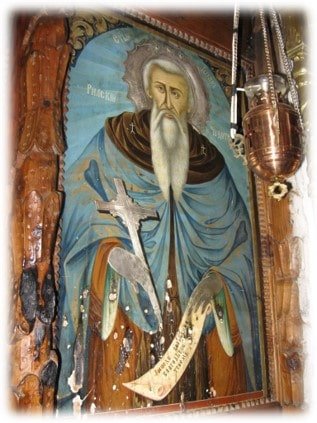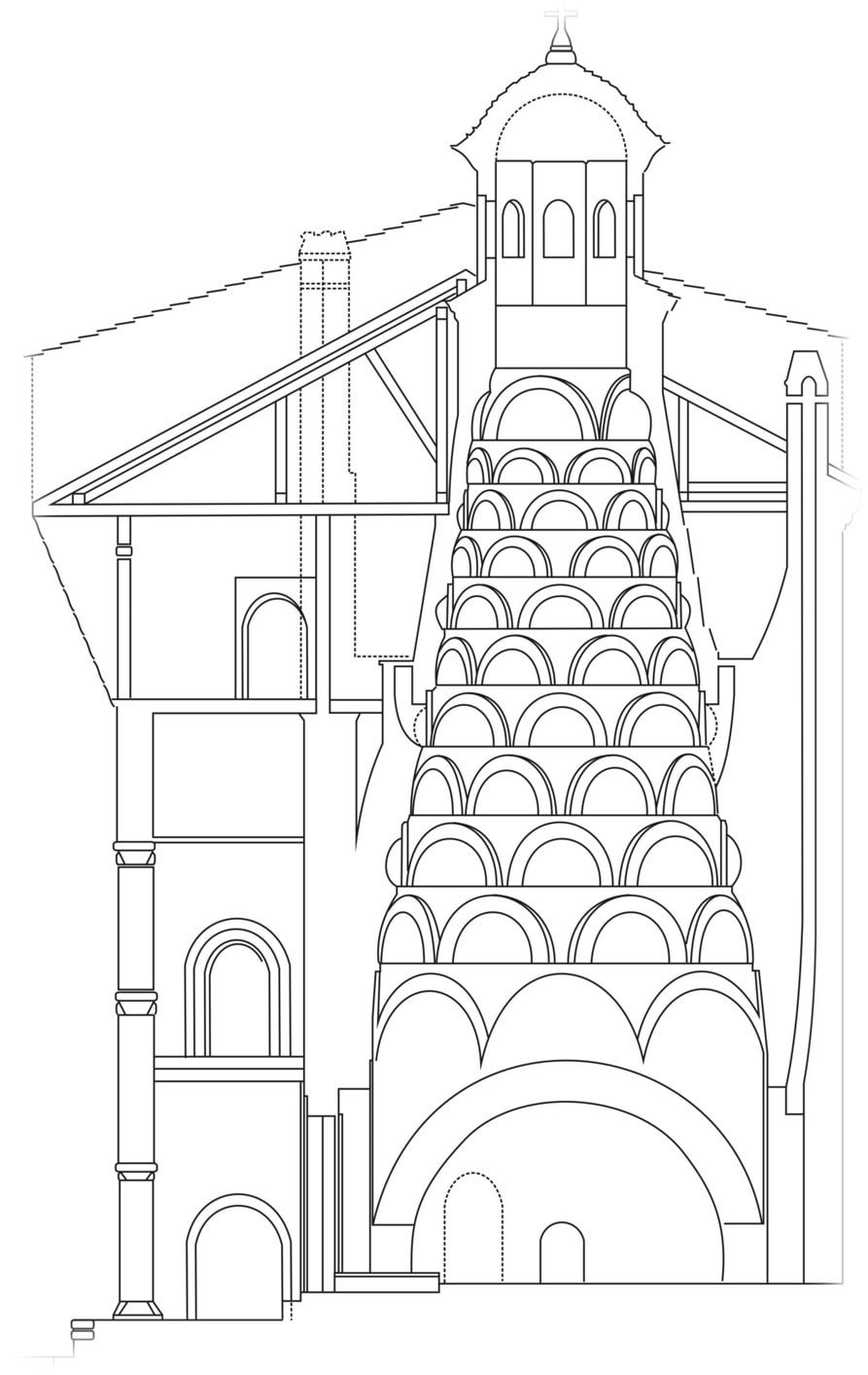Monastery of Saint Ivan of Rila
per person
The Rila Monastery is located in Southwestern Bulgaria, Kyustendil District, Rila Municipality. It is 117 km from Sofia on the international road Sofia – Kulata (E79), after turning off at Kocherinovo station. It is another 30 km up the Rila Mountain to reach 1147 m above sea level. The road winds along the fast-flowing Rila River and passes through small villages with still-preserved traditional houses from the late 18th and 19th centuries. They arose along the road as stops for the unabated stream of pilgrims over the centuries.
Before the road reaches the monastery gates, it also passes by several of monastic properties – metokhia surrounded by high stone fortress walls and picturesque churches inside: Orlitsa with St. St. Peter and Paul Church and Pchelino with the Assumption Church.
The end of this road does not end at the Rila Monastery, but continues for another 5 km to the east to reach a place where the Patron Saint Ivan is supposed to have lived in the first half of the 10th century. The place is very stony, with a cave and Church over the grave of St. Ivan Rilski. The church today is single-nave, single- apse, with a narthex, vaulted and with blind domes. It is built of stone. According to the tradition, the saint used to live and pray there in the rocks.
Saint Venerable Ivan the Wonderworker of Rila (probably 876 – 946) was the first Bulgarian hermit – saint, heavenly patron of Bulgaria. The legends of his feats are numerous as well as the variants of his life. What we certainly know is that he secluded himself high up into a cave in the Rila Mountain described as Rila desert for its mainly granite structure, its rocks and solitude – and devoted himself to fast and prayer. Soon some disciples joined him. The Monastery was established, and St. Ivan wrote convention of monastic life. Along with the many legends, his extensive life written by Patriarch Euthymius (┼ around 1402-1404) has also survived. The earliest known icons with the face of the saint are among the frescoes of the Boyana Church, Sofia (1259) and the Church of Saints Peter and Paul, Veliko Tarnovo (fresco layer from the first half of the 15th century).
The original buildings of the monastery have not been preserved. However, it is certain that in the first half of the 14th century it was located at its current place. This is evidenced by the Tower of Protosebastos Hrelyo. The date is certain for the tower is entirely preserved next to the monastery church and the extensive epitaph of its owner Hrelyo left by his wife and dated December 27th 1342. The Tower is of the donjon type, very common in Europe after the late 10th – early 11th century. The Hrelyo’s tower is built of stone in 5 stories, 23 meters high. Noteworthy is the Transfiguration Chapel on the top floor, with frescoes from the 1330s – an excellent example of the Bulgarian Medieval wall painting.
FORMAL ANALYSIS
The Rila Monastery is stauropegial – in the Orthodox world subordinated directly to the Primate of the Church – the Patriarch or the Synod rather than to the local bishop. During the 12th – 14th centuries, its fame was great attracting many worshippers. The Bulgarian kings paid special tribute to it donating lands, villages together with the villagers and other riches. The Monastery became one of the richest institutions of Medieval Bulgaria. The original of the donation deed of Tsar Ivan Shishman (┼ 1395) has been preserved. After 1396 and the establishment of the Ottoman domination in Bulgaria, the Rila Monastery was repeatedly attacked, destroyed and burned, only to be reborn anew each time. Today, the Rila Monastery is a fortress protected by a stone wall, 24 meters high, with one gate each to the east and west. It surrounds an irregular pentagonal courtyard. From its inner side 4 or 5 rows of terraces with the monastery cells (for about 300 monks) are arranged, 4 chapels, a library, a kitchen and economic rooms. The total area is 8.800 sq. m, and the built-up area is 5.500 sq. m.
In the middle of the courtyard the Hrelyo’s Tower and the Catholicon dedicated to the Nativity of the Virgin Mary are located. The present cathedral church was built in 1834-1837 over the foundations of the Medieval church from the 14th century. It belongs to the Athos type – a domed basilica with 5 domes of cruciform arrangement. From the north and south, 2 chapels with apses were added, dedicated to St. Nicholas of Mirliki and to St. Ivan of Rila. To the right of the royal doors of the altar, the relics of the Saint are kept in a traditionally painted wooden coffin. The church has no narthex. It is surrounded on the south, west and north by a single-storey covered arcade gallery.
The fresco decoration inside and outside was completed in 1846. The frescoes, as well as the carved iconostasis covered with golden foil, are the work of the Samokov Art School. Among the most prominent artists are Dimitar Zograf, Zahari Zograf and Stanislav Dospevski. Masterpieces are also left by representatives of the Art School in Bansko. The wall paintings of the Orthodox churches come to be a bright peculiarity of the Eastern Christian world. In Rila Monastery they present in detail the philosophical and moral concepts of the community. In essence they contain and express in symbols and colours the nature of the Eastern Orthodox – the history and structure of the Universe, models of behaviour, the choices the Orthodox Christian has the right to make, and finally the price they have to pay for their choices. Murals are a catechism expressed in magnificent pictures.
Following the tradition, Zachary Zograf has also added some ethnographical elements. One of them is the scene with the medical woman – witch, rejected by the church but celebrated by the devils. In Bulgarian the word for witch derives from the verb to know – it is veshtitsa meaning she who knows. She is a very significant figure in the traditional community living at the margin between the culture and the nature, as all are afraid of her but inevitably seek her help at a certain moment of their life. Thus she knows all the peoples’ secrets and the way to solve the hardship. A figure stubbornly preserved almost to this day in the traditional culture.
The Rila Monastery is male, active. The memory of St. Ivan Rilski is celebrated on October 18.
The monastery library is extremely rich, containing manuscripts, old printed books and documents from the 14th – 19th centuries. It is also active, but it can be only entered after the express permission of the Monastery administration.
Today, several museums are located on the territory of the Monastery. The Church – Historical Museum preserves artefacts and icons from the Middle Ages and more recent times, which reflect the wide connections that the Monastery kept with Moscow monasteries and others of the Orthodox world. An Ethnographic Exhibition is also open, which includes the kitchen with its remarkable chimney, an unusual engineering creation. A separate icon exhibition contains outstanding works of the icon painting in Bulgaria. One of the richest collections of women’s jewelry is also owned by the Rila Monastery – for in the past the jewels were the only personal possession of women and they often donated them in the hope of divine help.
KATYA MELAMED
- MONASTERY OF SAINT IVAN OF RILA © PLAN. MARGARITA KOEVA: RILA MONASTERY, GENERAL PLAN
- MONASTERY OF SAINT IVAN OF RILA © PHOT. KATYA MELAMED: RILA MONASTERY. A VIEW FROM ABOVE
- THE TOWER OF HRELYO, 14 TH © PHOT. KATYA MELAMED
- THE CHURCH OF RILA MONASTERY © PHOT. KATYA MELAMED
- RILA MONASTERY. A GLIMPSE © PHOT. KATYA MELAMED
- ST. IVAN RILSKI. FRESCO, ZEMEN MONASTERY, 1330-1340 © PHOT. KATYA MELAMED
- ST. IVAN RILSKI. AMOROV ART SCHOOL. LATE 19TH C. © PHOT. KONSTANTIN RAGOCHEV
- RILA MONASTERY. THE CATHOLOCON © PLAN. MARGARITA KOEVA
- RILA MONASTERY. THE CHIMNEY, DRAWING © PLAN. MARGARITA KOEVA
- RILA MONASTERY. ETHNOGRAPHIC SCENE, A MEDICINE WOMAN. FIRST HALF OF THE 19TH C. © PHOT. KATYA MELAMED
Tour Location
Monastery of Saint Ivan of Rila
| Other monuments and places to visit | Ethnographical collection; Icon collection; the kitchen |
| Natural Heritage | Rila National Park |
| Historical Recreations | |
| Festivals of Tourist Interest | |
| Fairs | |
| Tourist Office | |
| Specialized Guides | Yes |
| Guided visits | Yes |
| Accommodations | Yes in the Monastery area |
| Restaurants | Yes in the Monastery area |
| Craft | |
| Bibliography | |
| Videos | |
| Website | rilskimanastir.org |
| Monument or place to visit | Rila Monastery – the Catholicon; the Church – Historical museum |
| Style | Bulgarian Medieval and Revival Period |
| Type | Monastic architecture |
| Epoch | (10th)14th / 19th centuries |
| State of conservation | Good condition |
| Mailing address | info@rilskimanastir.org library.rila.monastery@gmail.com |
| Coordinates GPS | |
| Property, dependency | Bulgarian Orthodox Church |
| Possibility of visits by the general public or only specialists | General public visits |
| Conservation needs | Yes |
| Visiting hours and conditions | Rila Monastery 6 a.m. – 8 p.m. Museum 8.30 a.m. – 4.30 p.m. |
| Ticket amount | Monastery courtyard and church – free access Museum 8 BGN Some discounts depending on the number of visitors, age, etc. |
| Research work in progress | |
| Accessibility | Good |
| Signaling if it is registered on the route | |
| Bibliography | Коева, Маргарита и др., Рилският манастир, С., 2000. Куюмджиев, А. Стенописите в главната църква на Рилския манастир. С., 2015 Иванов, Е. Das Bildprogramm des Narthex im Rila-Kloster in Bulgarein unter besonderer Berücksichtigung der Wasserweihezyklen, Diss. Erlangen, 2002. |
| Videos | |
| Information websites | rilskimanastir.org |
| Location | Rilski Manastir, Bulgaria |





















